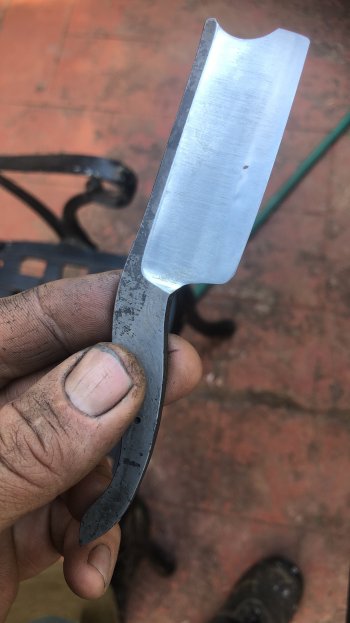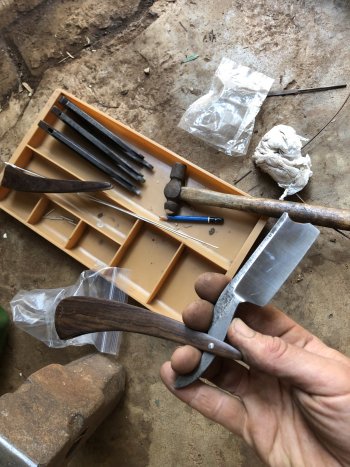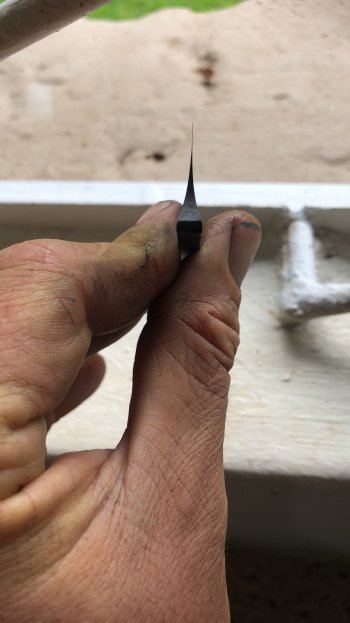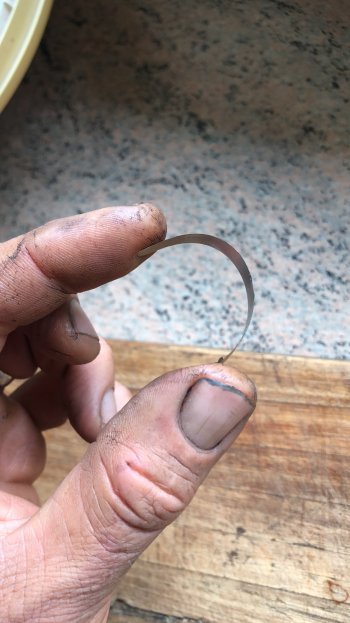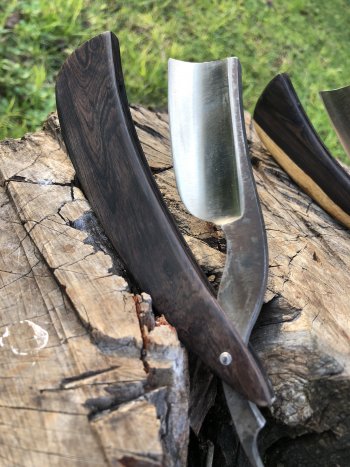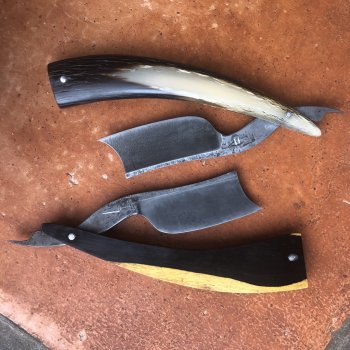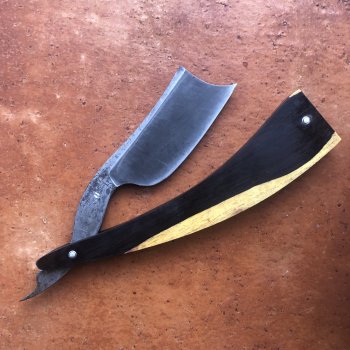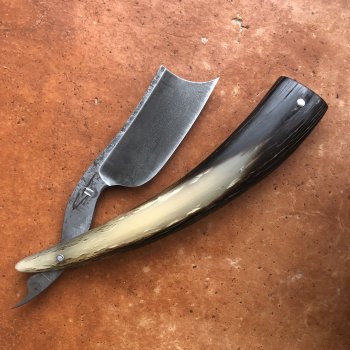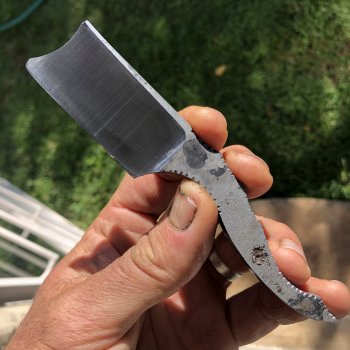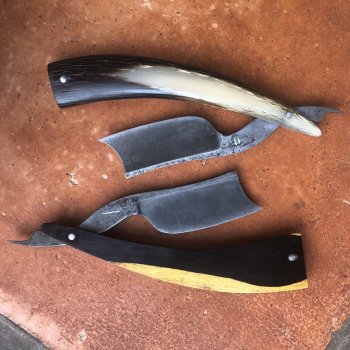You, sir, are a fine craftsman to be able to grind steel that thin. If I'm not intruding on your secrets:
1) Do you use a coolant during grinding?
2) What size contact wheel do you use to get the hollow grind on the blades shown in the photos?
3) Do you use a jig or grind free hand?
Again, very impressive work!
Ther are no secrets… and mistakes happen… and i am far from a fine craftsman yet, i am more of the good tool that might be rough around the edges category… but i know a few who fit the bill… and they are most generous with their knowledge…
i do grind freehand, i think a jig would make me more consistent, but i worry i might get lazy and let the jig do the designs… and once it gets thin, i think a jig might give rise to mistakes and overheating… the edge gets so thin it flexes quite a bit in the grind, so the precision will be lacking anyways…
a toolrest is however an easy win, but idon’t use that either, as i usually have a batch of razors going with differing grinds… to reduce heat buildup, and getting in a rut and making mistakes… it is however quite useful for the first bulk grinds, as you can lean into the steel better.
most important variable speed grinding… go slow… apply pressure to ensure steel removal and grit exposure on the belt.
Ceramic belts… and swop to fresh ones, once you get to an edge below 1/25” you are aiming for 1/250th in the end… i swop to 80 or even 120 grit when it gets thin… makes for better control and shallower scratches, also removes metal faster at lower pressure.
i use a water spray bottle… with soapy water… a continuous misting setup would be better…
that one was a3” wheel… but i start all grinds on a 12” wheel, and grind toll the edge is ready, and leave some of the razors like that as near wedges, they offer a different shave that i like… 10” wheel might be slightly better… then start hollowing out the grind with a 2-3” wheel… it is very easy to over grind one side during this phase as you have very little reference so watch what you are doing


